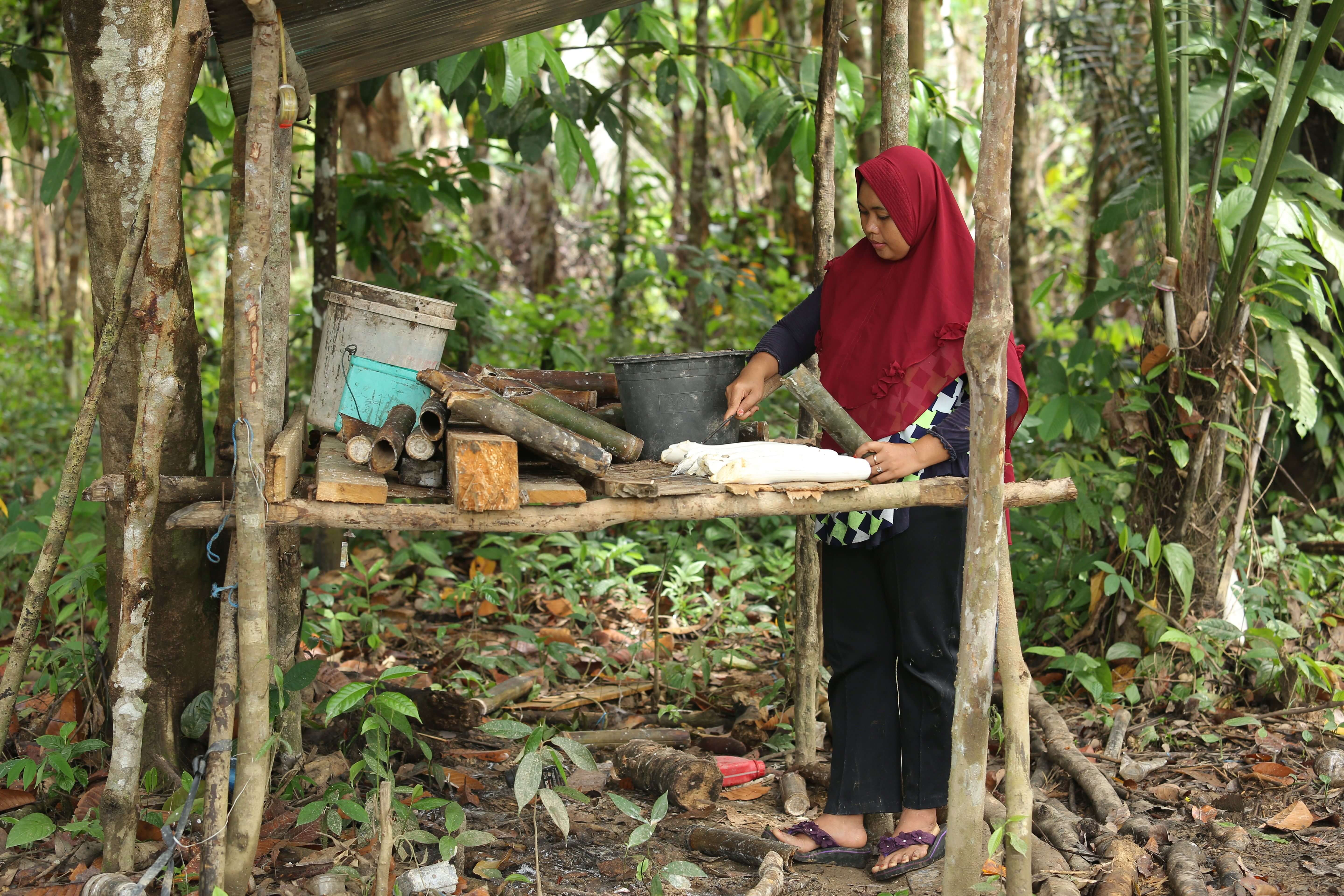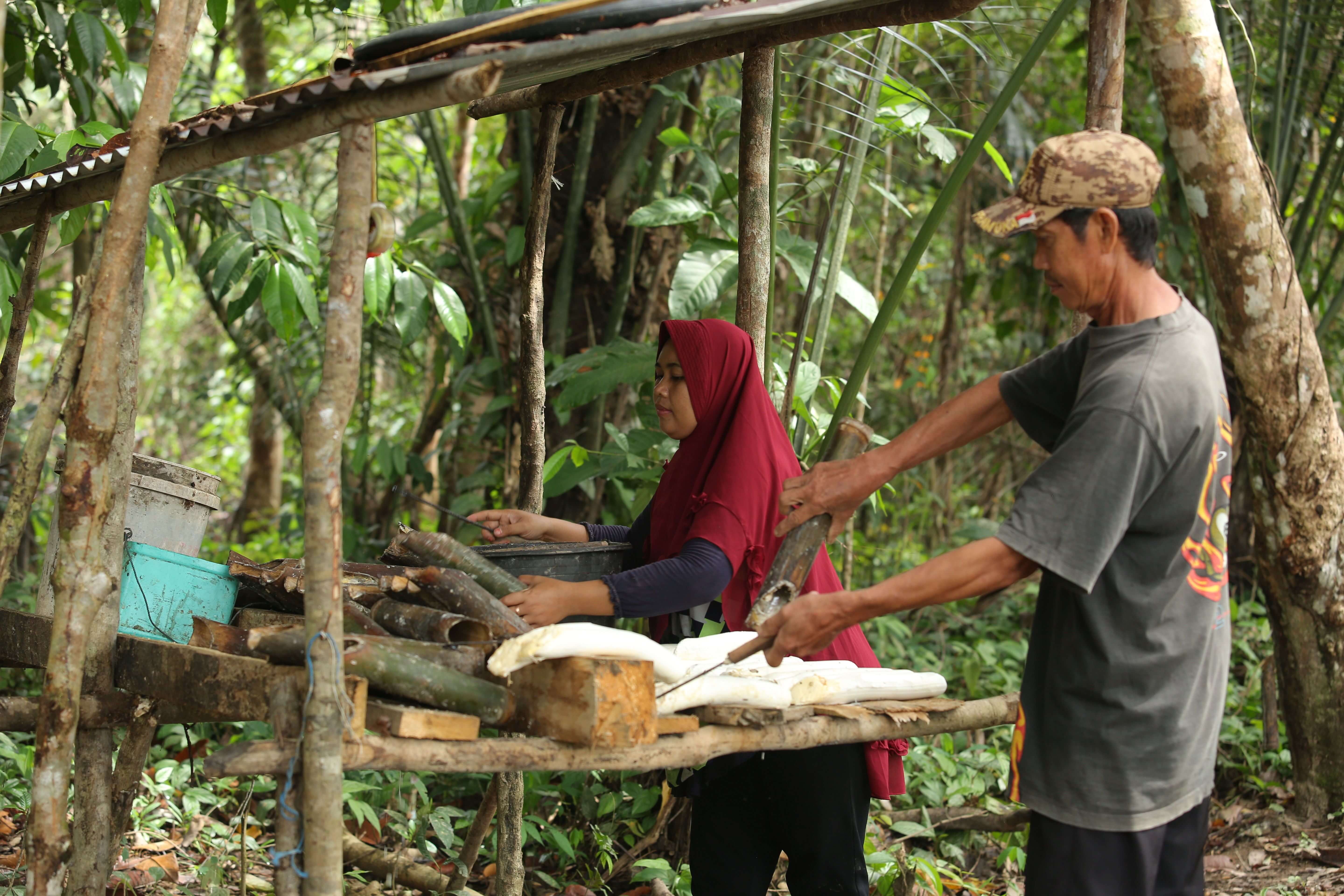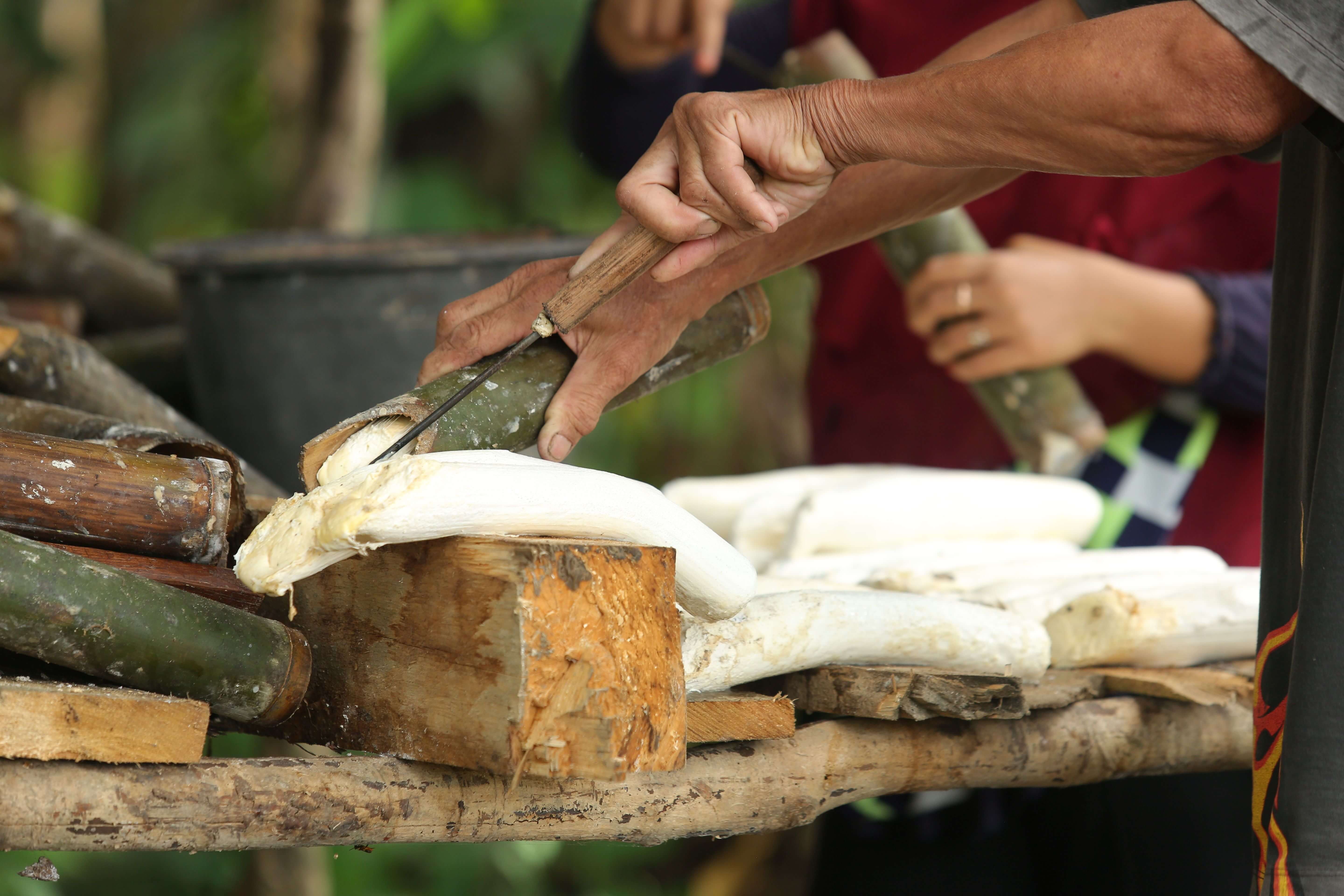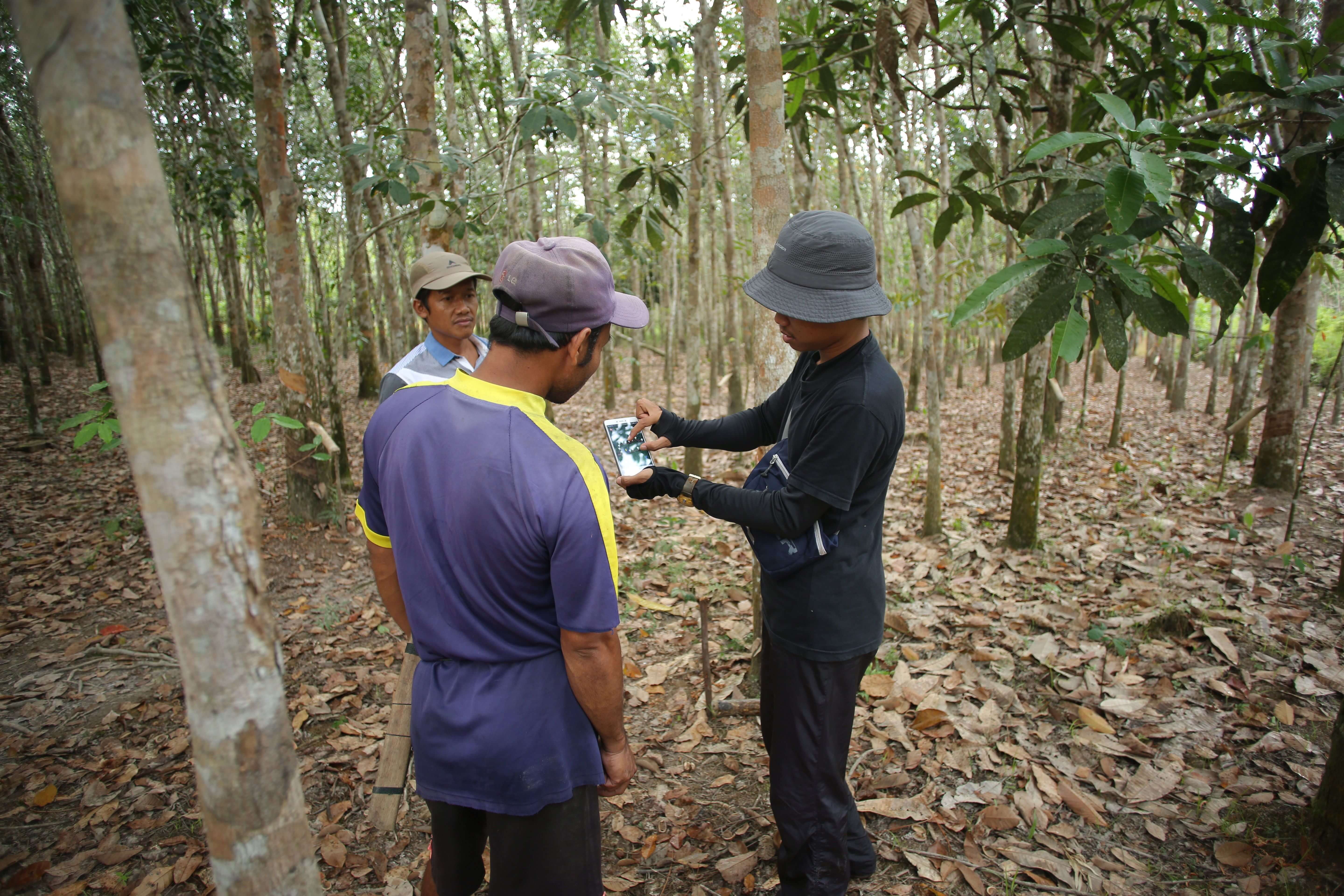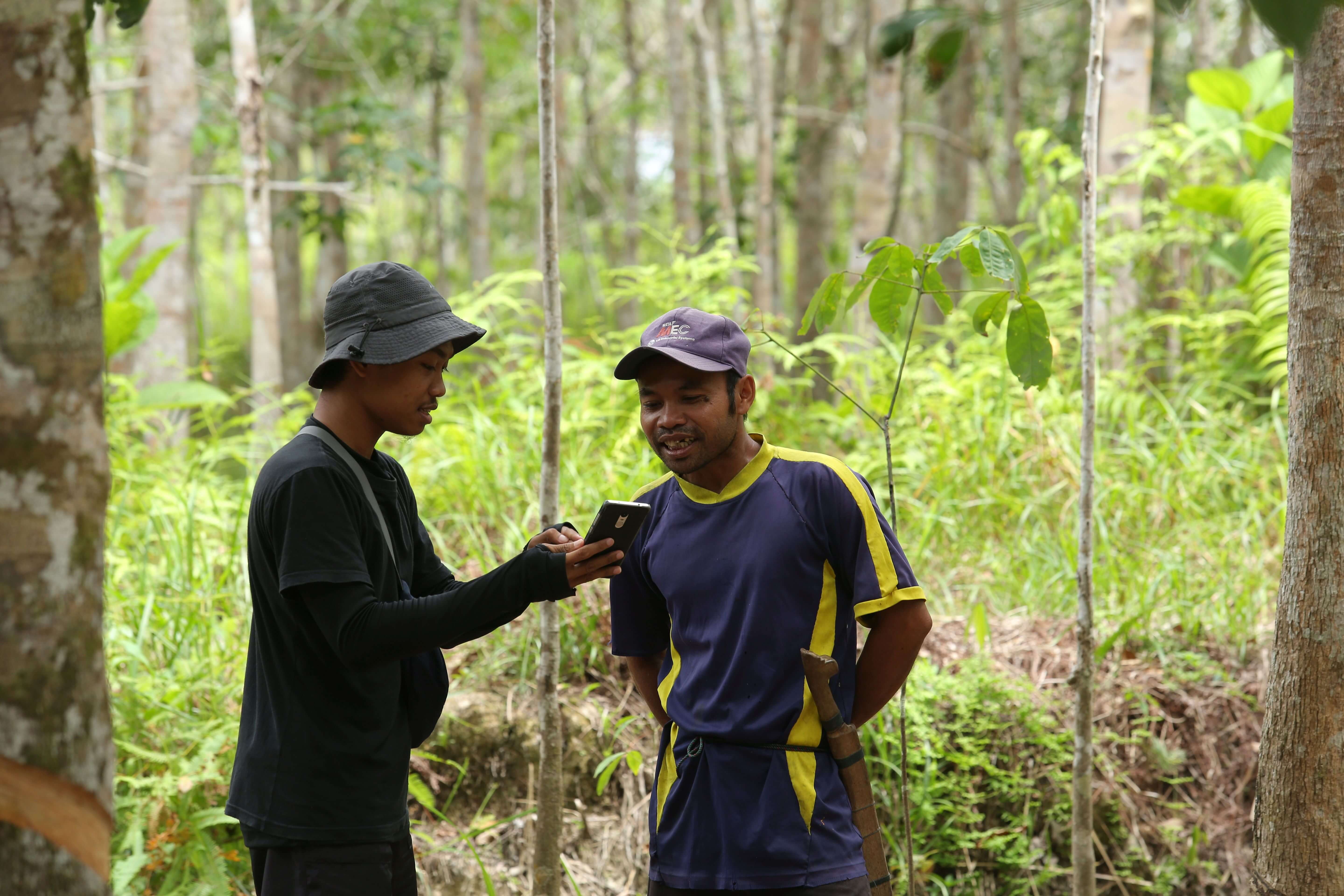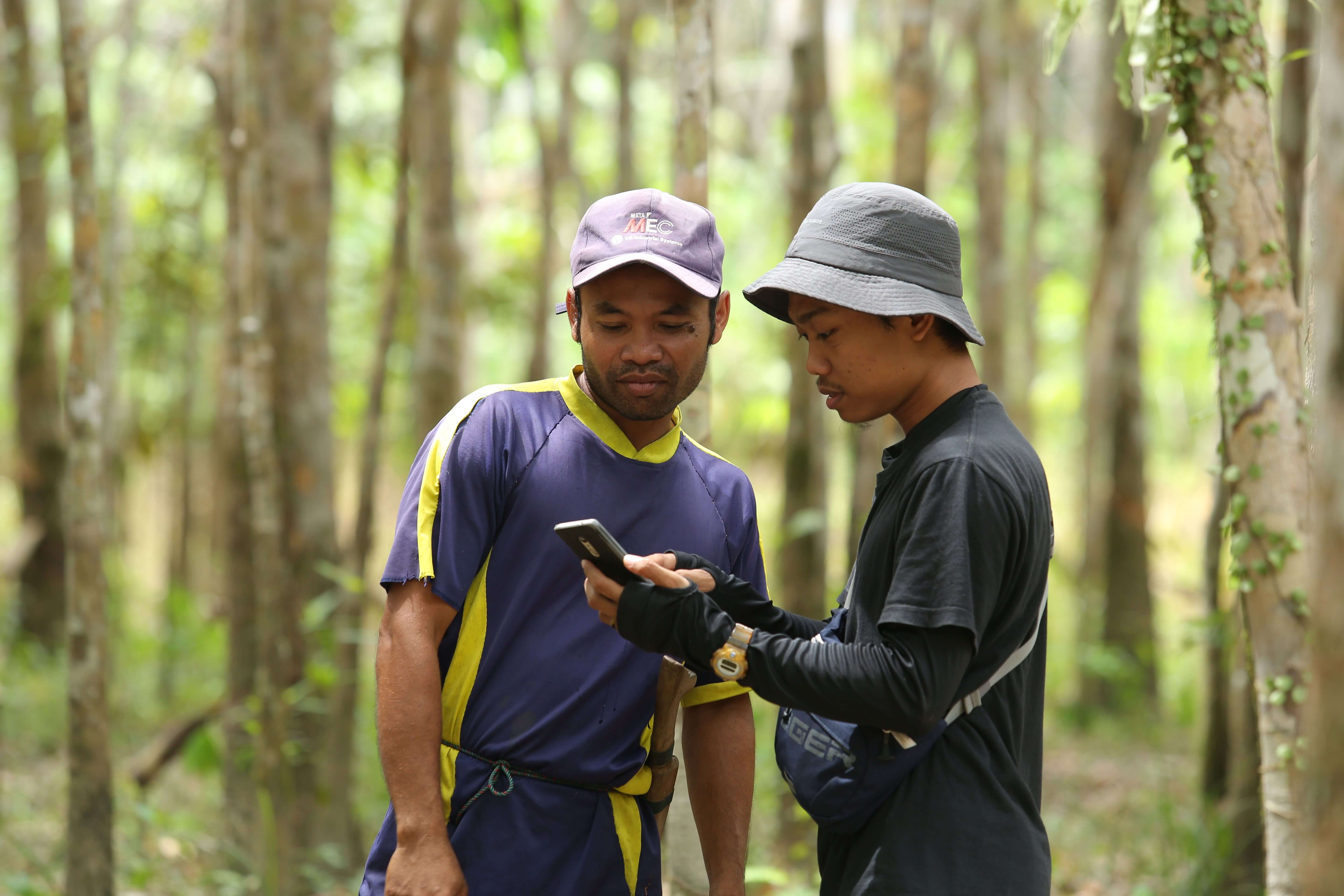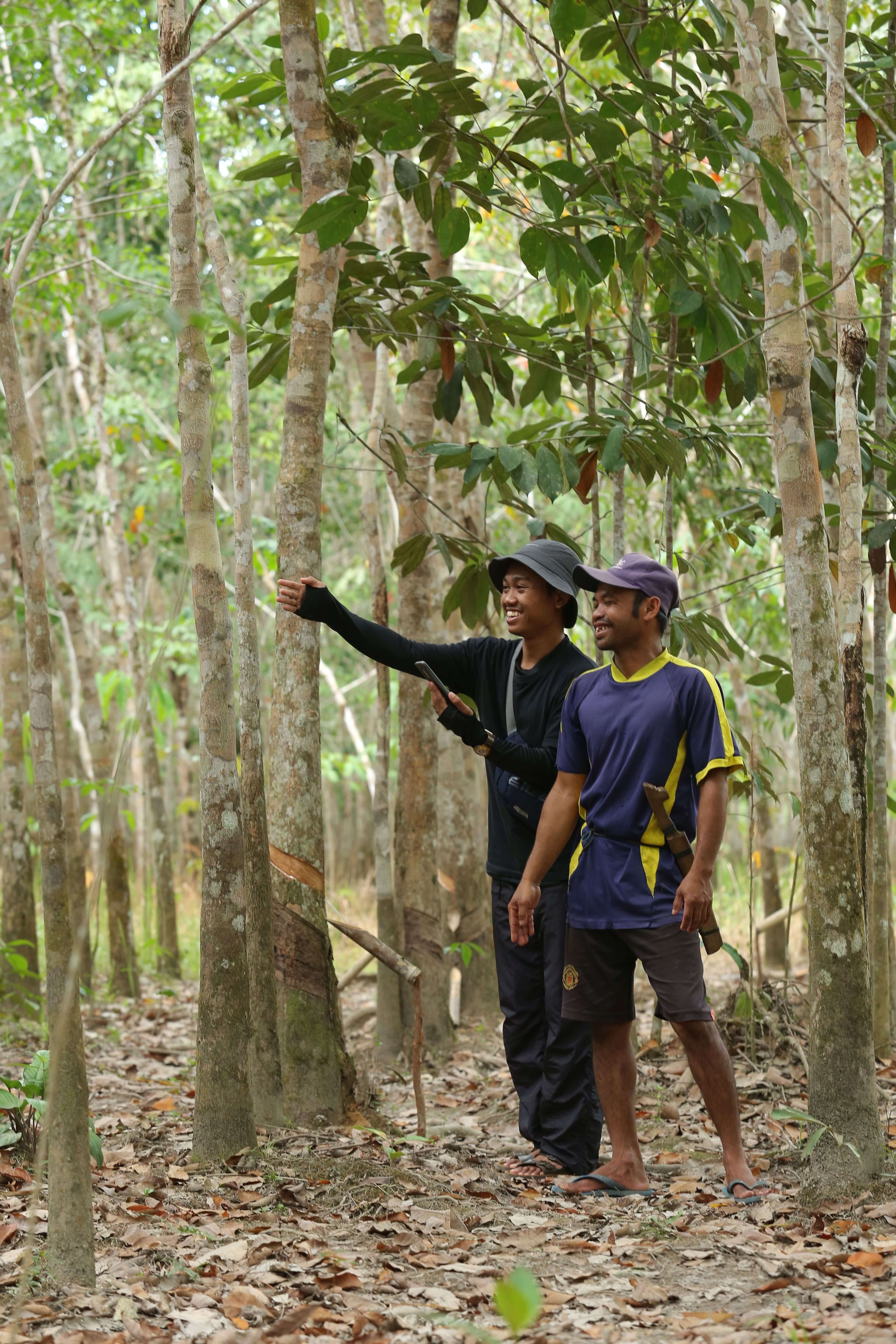Sustainable Agricultural Supply Chain
INA in Indonesia
At a glance
The projects „Sustainable Agricultural Supply Chains in Indonesia (SASCI)” and “Sustainability and value added in agricultural supply chains (SASCI+)” promote deforestation-free supply chains.
- The projects are located in the district of Kapuas Hulu.
- The main partners are the Indonesian Ministry of Agriculture and the Regional Planning and Development Agency (BAPPEDA).
- The main goal is to establish sustainable production regions.
- Also environmental education and awareness raising about the value of biodiversity are being promoted.
The production of internationally traded tropical commodities is oftentimes linked to deforestation and conversion of ecosystems. The most important drivers of deforestation and forest degradation are beef, soy, palm oil, pulp and paper, natural rubber, cocoa, and coffee.
BMZ commissioned projects in commodity growing areas in which a deforestation-risk persists. The overall objective of those projects is to support the establishment of sustainable production regions in which forest preservation and agricultural production are balanced by means of participatory spatial planning and in which sustainable and deforestation-free supply chains are established.
Project goals
- Strengthen the capacities of smallholder farmers
- Increase productivity and sustainability of production
- Improve their way of living
- Integrate smallholder farmers into international supply chains
Project examples in Indonesia
Examples are the BMZ-funded bilateral project „Sustainable Agricultural Supply Chains in Indonesia (SASCI)” and measures under the global project “Sustainability and value added in agricultural supply chains (SASCI+)”, implemented in the district of Kapuas Hulu in West Kalimantan. The projects are implemented by Gesellschaft für Internationale Zusammenarbeit (GIZ) GmbH.
The district Kapuas Hulu
The district of Kapuas Hulu in the West Kalimantan Province on the island of Borneo spans a total of almost three million hectares and is known for its rich biodiversity and its tropical rainforests. More than 70% of the district is still forested and there are two large national parks. Over 263.000 people, belonging to the indigenous Dayak group and the Malay group, live in the district. Farmers make a living from subsistence farming, combined with estate crops such as natural rubber, oil palm, pepper, kratom, and coffee.
In 2018, the district of Kapuas Hulu was designated as a UNESCO Man & Biosphere Reserve with the name “Betung Kerihun Danau Sentarum Kapuas Hulu Biosphere Reserve”. In 2020 Kapuas Hulu became a member of the Indonesian Sustainable Districts’ Platform (LTKL).
Partners
The projects´ main partners are the Indonesian Ministry of Agriculture and the Regional Planning and Development Agency (BAPPEDA). Under the UNESCO MAB framework, a multi-stakeholder platform was established in 2020. A main aim of the multi-stakeholder platform is to define and accompany the development and sustainability goals for the jurisdiction in a participatory way.
Environmental education and awareness raising about the value of biodiversity and forests are being promoted under the SASCI+ project. The project collaborates with the Indonesian Sustainable Districts Platform (LTKL). GIZ furthermore supports capacity building of the local government, NGOs and private sector companies to develop green products using the Biosphere Reserve logo to promote them.
What has the project achieved so far?
Working with the district government: Participatory land-use planning
Kapuas Hulu district comprises state forest areas, for other uses and presumably encompasses the oldest and deepest tropical peatland in the world. Strictly no agriculture is allowed within the forest estate. Estate crops are grown on land for other uses while frequently there are significant forest areas and peatlands left on these lands. In order to grow oil palms on carbon rich peatlands are drained. This releases high volumes of greenhouse gas emissions. Studies have been prepared to map the forests and peatland areas and land ownership areas in the district. These are being fed into the spatial planning process in order to locate productive agriculture away from carbon-rich soils and highly biodiverse forests.
Smallholder trainings in good agricultural practices
More than 2,375 smallholder rubber farmers and 290 oil palm smallholders gained additional skills in good agricultural practices. Training has included rubber tree management, natural rubber harvesting, and natural rubber post-harvesting techniques. In addition, 380 rubber smallholders and 335 oil palm smallholders and government extension workers (up to 70 staff) have been trained in agroforestry, permaculture, and climate-smart agriculture/climate change resilience.
The smallholder oil palm farmers are supported to organize into groups which will allow for certification according to the Indonesian Sustainable Palm Oil Standard (ISPO). In parallel, certification according to the Roundtable on Sustainable Palm Oil (RSPO) principles and criteria for smallholder farmers, is being promoted. A traceability system will be used in the oil palm supply chain.
In cooperation with the German tire manufacturer Continental AG, a digital traceability system is being used. The location of smallholder rubber plots is registered in the system and information on the volumes sold and prices received is being registered. The rubber farmers receive a better price for their produce because of a direct agreement with downstream processers and the Continental AG.
More transparency has been established through mapping of smallholder farms, registering them officially as business units with the local government. Furthermore, support will be provided to achieve formal land titles and local conflict mediators have been trained. The mediators have among other achievements successfully resolved a border conflict between a local community and the national park Betung Kerihun and is now focusing on conflicts related to the plantation sector.
What are the main hurdles?
Setting-up a sustainable production region is a long-term process. Agreeing jointly on goals for the district is not an easy task. An adequate representation of various groups in a multi-stakeholder forum is a major challenge. A production region will only be sustainable and successful if actual benefits come with it for the district government and the local population. For this, investments by companies are needed. However, companies first want to see positive results and hesitate to invest in a specific region. Besides, there are a variety of international assessment frameworks for sustainable production regions and not one that is accepted by all international buyers and local stakeholders equally.
